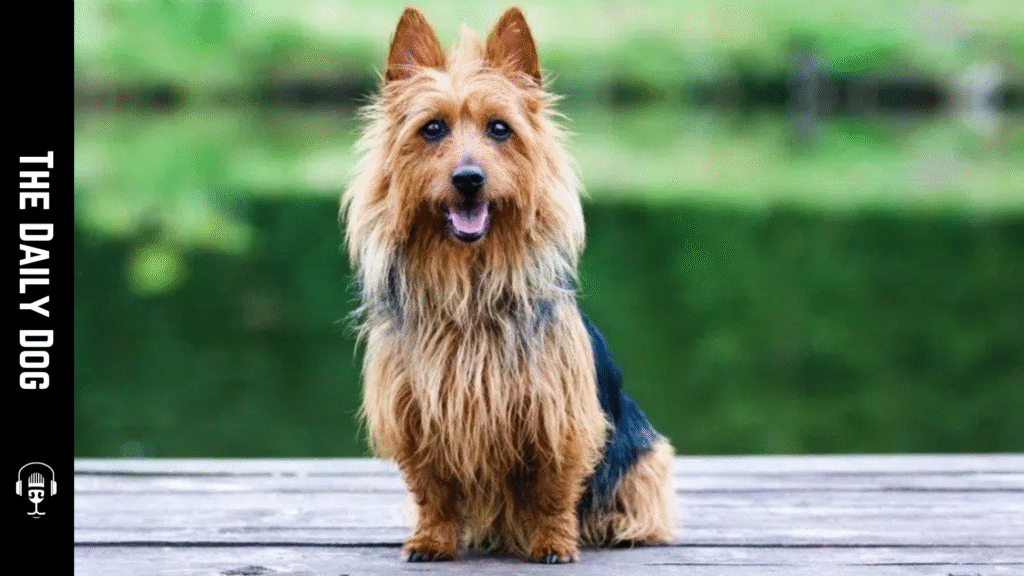The Australian Terrier is more than just a small, sturdy dog with a lively personality. This breed embodies a blend of courage, intelligence, and affectionate loyalty that makes them a standout choice for families, singles, and active households alike. Known for their characteristic wheaten coat, compact build, and tenacious spirit, Australian Terriers bring a vibrant presence to modern living while maintaining a surprisingly adaptable temperament. If you’re seeking a dog with a bold heart and a devoted nature, the Australian Terrier deserves a closer look.
A Short History of the Australian Terrier
Originating in Australia in the late 19th century, the Australian Terrier was bred to be a versatile working companion. Early farmers sought a small, fearless dog capable of pest control, alerting their owners to strangers, and performing farm tasks with reliability. Over generations, the breed evolved into a beloved companion that retained its watchdog instincts and independent streak. Today, the Australian Terrier is recognized for its resilience, practicality, and uplifting energy, making it a popular choice for households seeking a spirited, low-maintenance small breed.
Appearance and Coat Care
The Australian Terrier stands as a compact, well-proportioned dog with a robust frame that exudes agility. Typical measurements place the height at the shoulder in a range that supports both play and curb appeal. The coat is one of the breed’s defining features: a dense, straight, wiry outer coat with a soft undercoat. Colors commonly include wheaten, with darker shading around the ears and muzzle that adds character to the face. A distinctive trimming style helps maintain a tidy appearance while preserving the breed’s natural texture.
Grooming is straightforward but requires regular attention. Brushing a few times per week helps prevent matting and reduces shedding around living areas. Occasional hand-stripping or careful trimming keeps the coat resilient against the elements, which is particularly important for dogs spending time outdoors or in variable climates. Regular dental care, ear checks, and nail trims are essential components of a healthy routine for this active breed.
Temperament and Trainability
Australian Terriers are celebrated for their spirited, confident demeanor. They exhibit a blend of independence and affection that can translate into an engaging, interactive relationship with family members. While their boldness makes them natural watchdogs, their friendly disposition generally extends to visitors when properly socialized.
Intelligence is a hallmark of the breed, and they respond well to consistent, positive training methods. Early socialization helps curb any tendency toward skepticism of new environments or unfamiliar people. Because they can be perceptive and occasionally stubborn, patience and reward-based training are effective tools for fostering a strong bond and reliable obedience. With the right approach, an Australian Terrier can thrive in various settings, apartment living, suburban homes with yards, or rural properties, so long as their exercise and mental stimulation needs are met.
Exercise needs and daily routine
Active by nature, Australian Terriers require regular physical activity to maintain their health and happiness. Daily walks, play sessions, and access to safe outdoor time are essential. While their small size makes them manageable for many living situations, their enduring energy means owners should plan for sustained activity. Interactive games, scent work, and puzzle toys can provide mental stimulation that keeps them engaged and less inclined toward boredom-related behaviors.
A well-rounded daily routine often combines a brisk walk or run, playtime that includes fetch or agility-inspired activities, and short training sessions that reinforce commands and tricks. Because these dogs can be enthusiastic and highly alert, using positive reinforcement to guide behavior is particularly effective. Socialization through exposure to a variety of people, animals, and environments helps ensure they remain confident and well-adjusted as they grow.
Health considerations and longevity
The Australian Terrier is generally healthy with a relatively long lifespan, often living well into their teens with proper care. Like many small to medium breeds, they can be prone to certain conditions, so routine veterinary checkups are essential for early detection and management. Common health considerations include dental health, patellar luxation in some individuals, and occasional eye or ear issues that benefit from regular cleaning and inspection.
Proactive care includes maintaining a balanced diet appropriate for the breed’s activity level, regular exercise to sustain joint health, and preventive dental care. Responsible breeders prioritize health testing and responsible breeding practices to minimize inherited conditions and support the long-term well-being of the breed.
Choosing a breeder or adoption path
If you’re considering adding an Australian Terrier to your family, choosing the right path is important. Reputable breeders prioritize health testing, temperament evaluation, and socialization of puppies. They provide transparent information about lineage, potential risks, and care requirements. Prospective owners should ask about vaccinations, spinal health checks if relevant, and the socialization plan for the puppy’s early weeks.
Alternatively, adoption can be a fulfilling route. Rescue groups and breed-specific shelters often have Australian Terriers looking for homes. Prospective adopters should inquire about health status, behavior history, and the support offered by the rescue organization for new owners.
Living with an Australian Terrier: tips for success
Creating an ideal home environment for an Australian Terrier involves aligning the dog’s needs with your daily routine. Because they are alert and social, they benefit from a consistent schedule that includes regular meals, exercise, and mental challenges. A comfortable, safe space for rest helps them unwind after activity.
Set boundaries and establish clear house rules early. Positive reinforcement training encourages good manners without increasing stress or anxiety. Given their independent streak, gentle leadership and steady expectations help prevent pushy or overly dominant behavior.
Socialization remains crucial. Early exposure to different people, animals, and environments reduces the likelihood of overprotectiveness and enhances adaptability. Social experiences should be enjoyable and reward-based to reinforce calm, confident responses.
Grooming routines and seasonal care
Seasonal changes can influence grooming needs. In warmer months, provide shade and careful hydration, while in colder periods, consider protection against chilly weather and potential joint stiffness. Regular coat care, including brushing and occasional trimming, helps maintain the breed’s iconic look and health. Ear cleaning and dental hygiene should be integrated into a weekly routine.
The role of Australian Terriers in families
Australian Terriers bring a distinctive blend of charm and practicality to families. Their compact size makes them suitable for homes with limited space, yet their energy level keeps them from feeling sedentary. They form strong bonds with family members and often act as vigilant, affectionate guardians who are quick to alert their owners to changes in their environment.
For families with children, supervision and teaching respectful interactions are important. With proper guidance, Australian Terriers can thrive in households that value playfulness, loyalty, and a zest for life. Their willingness to participate in daily activities—whether a family hike, a park visit, or a playful game at home—makes them engaging companions.
Conclusion
The Australian Terrier is a small dog with a big personality. Courageous, curious, and consistently affectionate, this breed adapts well to a variety of living situations while delivering lively companionship and dependable loyalty. With thoughtful care—regular exercise, ongoing training, and proactive health maintenance—an Australian Terrier can be a joyful, enduring member of your family. If you’re drawn to a compact, spirited canine that combines readiness for action with a warm, affectionate heart, the Australian Terrier offers a compelling choice for your next canine partner.
We offer a FREE Strategy Call.
Click on the graphic to learn more
Read More

Common Mistakes New Dog Owners Make in Training and How to Avoid Them









